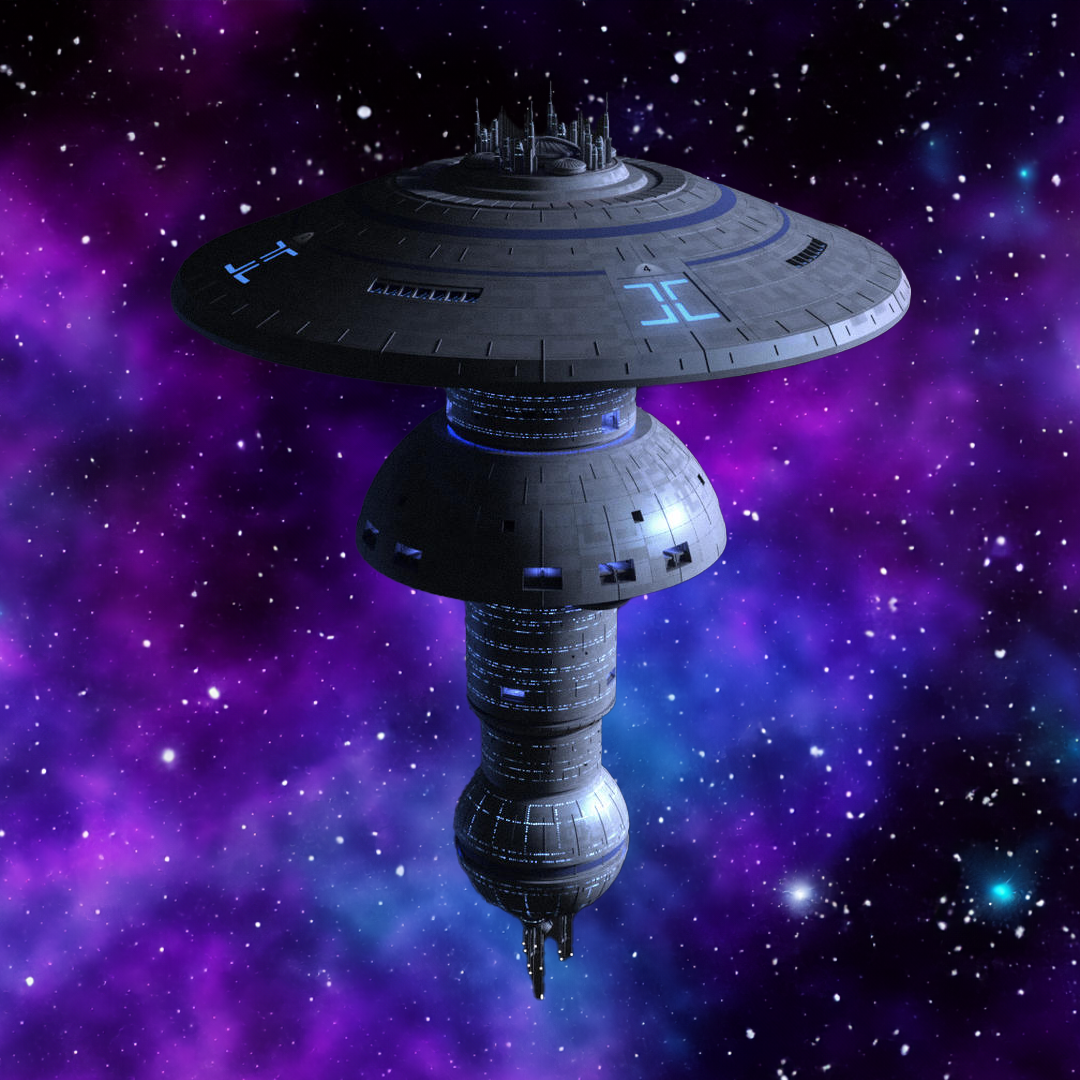Olympia Station

| |
| Olympia Station | |
| Information | |
| Registry | DS-20 |
| Class |
Spacedock |
| Affiliation | |
| Location | |
| System | Olympia System |
| Sector | Olympia Sector |
| Quadrant | Alpha Quadrant |
| Assignment | |
| Role |
Exploratory Support |
| Unit | Fourth Fleet Operations |
| Squadron | Arcturus Squadron |
| Personnel | |
| Commanding Officer | Commodore Brett Logan |
| Station Populations |
|
| Template:Starbase | |
Deep Space 20, code-named Olympia Station, is a Federation Spacedock-class starbase located in the Olympia system on the extreme rimward trailing edge of Federation space near Sheliak, Tholian and Tamarian space. Named along with the system it resides in for the ill-fated exploratory vessel USS Olympia, this starbase serves a similar purpose to Deep Space 17: a waystation for long-range missions beyond Federation space.
Operations
Assigned to the Fourth Fleet, Olympia Station supports the following operations in the Olympia Sector:
- Service exploratory starships embarking on and returning from missions outside of Federation space.
- Conduct scientific research on nearby systems and identify sites for future Federation colonization.
- Monitor the expansion of the Sheliak Corporate and Tholian Assembly.
- Maintain diplomatic relations with the Children of Tamar.
Support Vessels
Olympia Station is primarily supported by the USS Nellie Bly, a Challenger-class scout. The Bly performs scouting functions around the Olympia system, as well as diplomatic courier missions to and from Tamarian space. All twelve of the station's runabouts are kept in constant use on away missions as well.
Configuration
Compared to the stock Spacedock-class station, Olympia Station has been modified many times over its nearly eighty years of life. It has modern systems and its docking facilities have been reworked to handle 25th-century starships, though these modifications did not include widening the upper bay doors, so the largest vessels must vie for space in the single large docking bay in the lower docking module.
Docking Facilities
The upper spacedock has a four-armed docking column that supports up to eight midsized starships--midsized by 25th century terms, anyway. The space doors at 90-degree angles along the rim of the upper dome leading into the bay are labeled 12, 34, 56, and 78, as they allow access to mooring points 1 & 2, 3 & 4, and so on. Halfway between each set of space doors is a band of four shuttle bays that also provide access to the interior of the bay, each with an operations complex taking up the center; each operations complex is responsible for the quadrant of space it faces. The upper docking module can only accommodate ships up to 245 meters wide, as the doors are 250 meters wide.
As with Gateway Station and the Starfleet Museum, Olympia Station's arboretum module was retrofitted to serve as a single large berth capable of servicing a single Odyssey-class heavy explorer. This bay, in the middle third of the lower module, is labeled 9, and is 1,200 meters deep, 600 meters wide, and 200 meters tall. Below this bay are twelve large hangers. Runabouts, shuttles, and small civilian vessels have access to dozens of hangers at various levels across the station, while larger vessels generally orbit the station when they don't need service.
Arboretum
In its original configuration, the lower docking module was dominated by a large arboretum that took up the upper two-thirds of the module, with the station's travel core running down the middle. Because of the addition of a large bay for an explorer-type vessel in this area, the arboretum has been shrunk substantially to take up the top third of of the module, but like in other new facilities, its use of holographic technology makes it look just as large as it did before. The travel column continues down the center of the arboretum, but takes a horizontal path over the docking bay, before proceeding down again, and then back toward the center of the station under the docking bay.
History
The Olympia system has been home to an automated Starfleet deuterium refinery since the late 2370s, but plans for an eventual starbase to coordinate long-range exploration of the Alpha Quadrant were canceled during the Romulan Evacuation Mission. These plans never resumed due to Starfleet's inward-looking focus throughout the 2380s and 2390s. In 2400, the Fourth Fleet revived these plans. With the Spacedock-class Starbase Bravo recently replaced by a new Guardian-class station, Fourth Fleet Command decided to relocate the original Starbase Bravo to the Olympia System. During a year-long process, the station was refit and towed across Federation space to its new location. It was formally recommissioned in mid-2401, with Arcturus Squadron becoming the first exploratory group to call it home.
Notable Crew
Commanding Officers
In-Play
- Olympia Station is a flag station command assigned to Admiral Liam Dahlgren, but members may feature it in their stories in accordance with Section 4 of the Command Policy.
- Similar to Deep Space 17, Olympia Station is a waystation on one of the Federation's most distant frontiers. It is intended to fuel, supply, and repair ships for long missions outside of Federation space. It is approximately 300 light-years from Starbase Bravo, a two-week journey at Warp 9.99, and 128 light-years from Avalon Fleet Yards, a six-day journey at Warp 9.99. Slower ships would take weeks or months to reach the station.
- There are few direct threats to Olympia Station, as the Tamarians are friendly to the Federation and the Sheliak are uninterested in dealing with them. The Tholians can be a bit of a wildcard, though.
- Compared to other Starfleet starbases, Olympia Station has a lower civilian population, as it's not on a major trade route—at least not yet, as that will change when new colonies start to emerge.